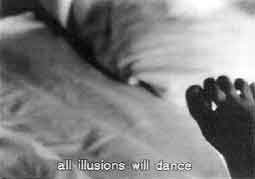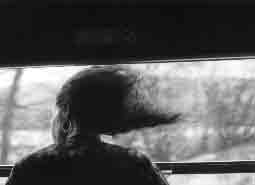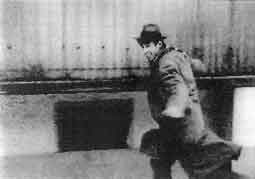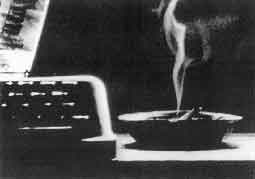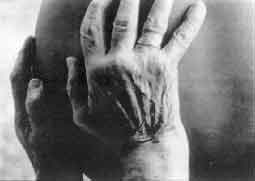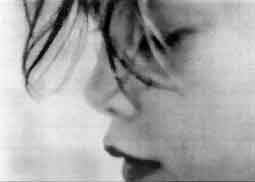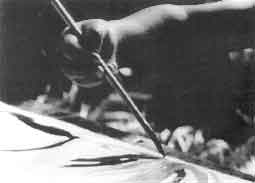Vagabonding Images
16 mm / 1:1.33 / black & white & color / mono / 45 min.
produced 1990 - 1998
released 1998
Produced & distributed
by
SIMNIC Films
Aventinstrasse 1
D-89469 München
e-mail: nicolashumbert@aol.com
Written and directed
by
Nicolas Humbert & Simone Fürbringer
Camera / Sound / Editing
Nicolas Humbert & Simone Fürbringer
Release
April 1998, Filmfestival 'Visions du Réel', Nyon
Awards
Special Mention, Filmfestival 'Visions du Réel', Nyon 1998
Jury Award / 'Experimental Documentary', Shortfilm Festival New York 1999
Special Mention, Fama Filmfestival, Portugal 2000
Festivals
Nyon, Madrid, Barcelona, Solothurn, Rotterdam, Berlin, München,Thessaloniki,
Osnabrück, Bonn, Austin, London, New York, Augsburg, Göteborg,
Frankfurt,
Famalicao, Selb, Vila do Conde, Rome, Riga
Synopsis
A film that perhaps comes closest to being a dream. Shot over a period
of seven years, it is composed of fragments of memory and moments of life
woven
together to create a sequence of microscopic stories. 'Vagabonding Images'
is a
film that plays with the forms of cinematic language, inspired by the
poetic
collage techniques of the French Surrealists and Japanese Haiku poets.
Press
There is a type of
film that could be described as "first person documentaries"
-
films that have their starting point in a personal design for life, an
autobiographical situation; films that flow from the heart of a person's
life,
which they take as their theme in an artistically sublimated form. In
the
context of cinema history, films of this kind have their origin in the
work of
Dziga Vertov and the Russian avant-garde of the 1920s. From there, a line
can
be traced through the invention of 16 mm and Super-8 technology - as used
in
the film notebooks of the New American Cinema in the work of Maya Deren,
Jonas Mekas, Stan Brakhage and Robert Frank - to contemporary video
techniques.
'Vagabonding Images', the new film by Nicolas Humbert and Simone
Fürbringer the first they have made together, belongs in this context.
It, too, is a film that takes the personal lives of its authors as its
starting point. From a collection of Super-8 notes compiled over a period
of five years, Humbert and Fürbringer have created a composition
of images and sounds, the form of which is based on the rules of a children's
game that the French Surrealists used in their
experiments with "écriture automatique".These texts,
which were the products
of a game of chance, were called "cadavres exquis". In 'Vagabonding
Images',
this process is transposed to the medium of celluloid, which is why the
film
might bear the subtitle "cinematographic cadavre exquis". Here,
autobiography
is combined with experiment in film.
(Off, 1999)
The Hunt for Happiness
Stylistically, the
most original film in the series is 'Vagabonding Images' by
Nicolas Humbert and Simone Fürbringer. It is a film made up of enigmatic
images and of a dream-like intimacy, playful, yet strictly composed, like
Japanese ink drawings. A collage of intense moments, through which
intimations of a personal history manifest themselves. If one looks at
a word
long enough, its meaning dissolves. All that remains are graphic signs
that
tentatively regain their significance. Nicolas Humbert and Simone Fürbringer
proceed in a similar way with their images. These are viewed with such
intensity that they become alienated, transformed into visual symbols
that are
the gradually filled with imaginings again. Flurries of snow become a
pattern
of points of light and finally a dream image of buried memories. Pictures
of
outward reality are transformed into inward images. 'Vagabonding Images'
is
a documentary film that reveals the broad scope afforded by the cinematic
language of this genre.
(Rainer Gansera, Süddeutsche Zeitung, 1999)
